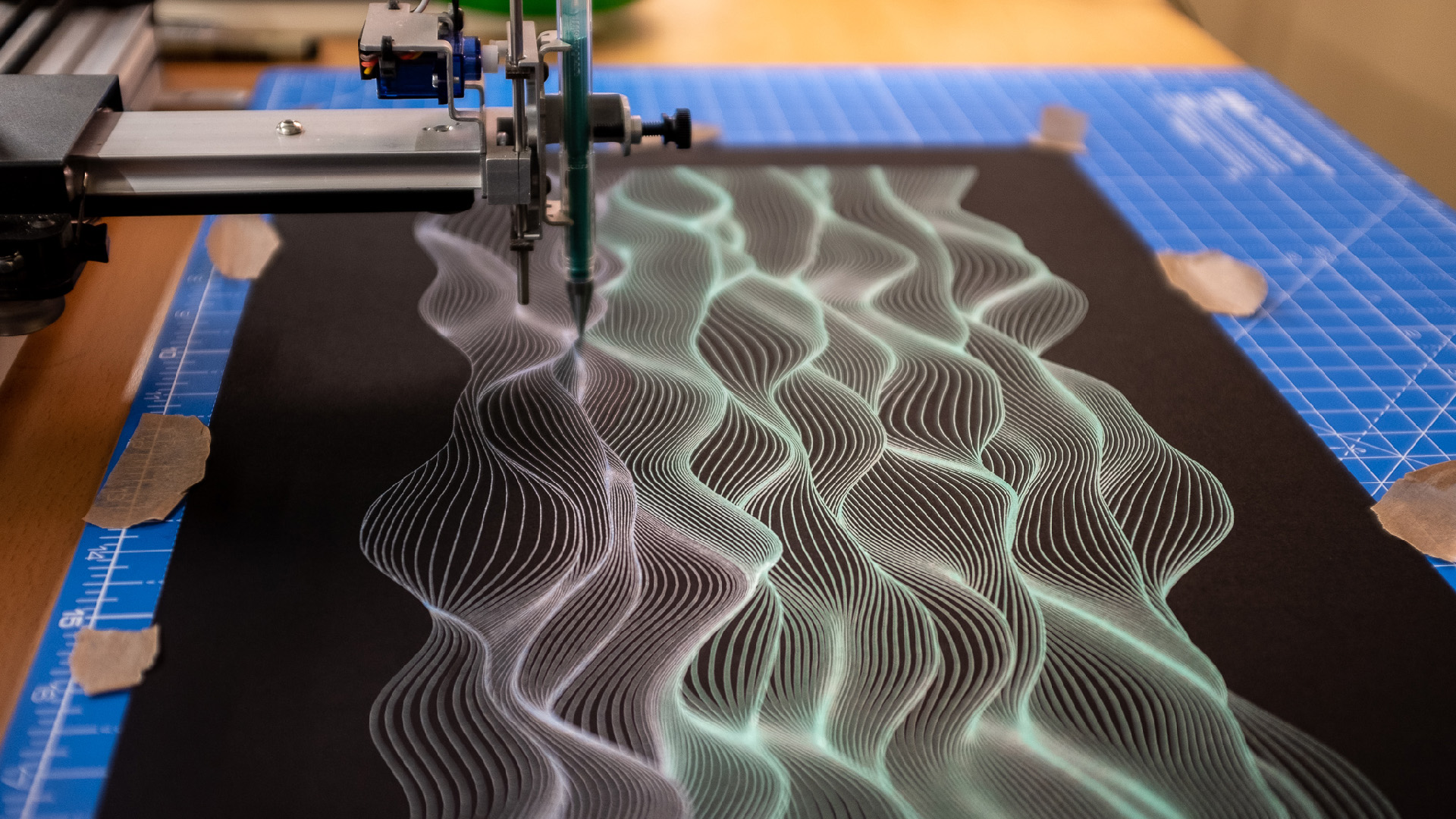Offerings responding to this prompt will be discussed in class on Wednesday, October 13. This set of prompts has two parts:
- Readings on Fields/Distributions
- A Field/Distribution Composition (Plotted)
Distribution deals with the rhythmic reorganization of pattern structure. It involves movement of unequal elements which are equalized over the surface through the interplay of countermovements between them, rather than by an even repetition of identical design units.
1. Readings on Fields/Distributions
Please check out the following three resources:
- Read Chapter 2 (“Distribution”, pages 64-71) of Graphic Games by Victor Baumgartner. [PDF]
- Read “Flow Fields” by Tyler Hobbs.
- Skim this collection of algorithmic morphogenesis resources by Jason Webb.
In a blog post, write a very brief response to something that you found interesting or helpful from these readings. Title your blog post, Nickname-FieldReading, and Categorize your post, 07-FieldReading.
2. A Field/Distribution Composition, Plotted
The purpose of this prompt is to strengthen your skills in generative form-making with procedures that cover a 2D surface, such as growth algorithms and flow fields. Whereas the Pattern project (#6) invited you to explicitly calculate a specific design, here, you will likely be indirectly governing a process or simulation that implictly covers the page. You may use any algorithm you wish. The challenge will be making it bend to your will: making it your own.
Prompt: Develop a computationally-generated, machine-plotted artwork that presents a field or distribution across the surface.
To create your project:
- Browse the materials from last Wednesday’s lecture.
- Sketch ideas in your sketchbook. You may use any algorithm you wish, but if you are feeling uncertain or short on time, I encourage you to get started with a Perlin noise flow field.
- Write code to generate several compositions. Export SVG files for plotting.
- Plot your artwork. You are strongly encouraged to use more than one color in your design. Please do not use standard printer paper.
To document your project:
- Create a blog post on this website. Title your blog post, Nickname-FieldComposition, and Categorize your blog post, 07-FieldComposition.
- Embed some photographs of your sketches.
- Embed some screenshots or SVGs of your generated compositions.
- Embed a good-quality photograph of your plotted composition. Consider having a second photograph showing a close detail.
- Write a paragraph (of about 100-150 words) describing the logic of your composition, your sources of inspiration, your process, and an evaluation of your results. Be sure to acknowledge any code libraries that you used.
Here are some potentially helpful Coding Train videos:

